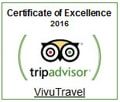Overview
The Capital of Cambodia, Phnom Penh is located where the Mekong meets the Tonle Sap River. There is evidence of its French colonial history with wide boulevards and limited architecture which mixes seamlessly with the modern buildings you would expect of every Capital city. Buddhist wats and palaces complete the city which is fairly hectic at times; be careful crossing the road because the traffic seems to come from all directions.
Phnom Penh, a city of around 1.5 million inhabitants can lay claim to being one of the friendliest capitals in Asia despite the obvious poverty that still exists in the country. So much of its recent history is sad; Pol Pot, the Khmer Rouge and the ‘’Killing Fields’’ but Phnom Penh and its people have come through them and survived.The Khmer Rouge allowed the City to deteriorate once it took control in 1975 but fortunately the regime did not last long. Phnom Penh has developed quickly since its demise.
The riverside is a popular place for cafes and restaurants; somewhere to relax and absorb the surroundings, colour and general life of the locals. It is a fairly safe city though everyone should avoid getting into any arguments, much as is the case in any large city.

How to get there
The International Airport has direct connections with cities all over Asia, especially the South East. It makes Phnom Penh an essential part of Indochina tour packagesand the obvious starting point for Cambodia tour packages.
Phnom Penh is the hub of the road system with plenty of bus services for tourists arriving or departing. Buses go to each of Cambodia’s neighbours as well. Cambodia is currently improving its road system but it will take time. In the rainy season there are sometimes issues getting around.
The Mekong is a major transport route and there are fast and slow boats between Phnom Penh and the Delta in Vietnam. The River heads north from Phnom Penh but it is not navigable all its length to its Tibetan source but enjoying some time on the River near Phnom Penh should not be missed.
Best time to visit
It is difficult to find any time in the year when the weather is not hot. The essential differences in the year revolve around rainfall. The rains begin in April after the hottest part of the year. It is humidity that noticeably increases with rain sometimes only an afternoon shower. There are major downpours at times that certainly affect everyone’s ability to get around.
Things to do
If you are part of an organised tour group you can expect to see a few things on a trip around the City.
• The Royal Palace(Preah Barum Reachea Veang Chaktomuk Serei Mongkol) includes the two impressive pagodas in its grounds, the Silver Pagoda and the Temple of the Emerald Buddha. There are several other buildings including the Throne Hall, Moonlight Pavilion and Khemarin Palace. They date from the 19th Century when the French decided to relocate Cambodia’s capital to Phnom Penh. Most have survived fairly well bearing in mind the city’s subsequent history, a mixture of local style and French technology. There are limited opportunities to take photographs inside any of the buildings unfortunately.
• The National Museum of Cambodia close by has great exhibits from the Angkor period in Cambodia’s history. There are several statues and tablets and a pleasant little garden on the site.
• Wat Phnom ("Hill Temple") is a pleasant place attracting locals as well as tourists. It is the setting that is the impressive feature, not the structure as such. It was built in the 14th Century and is the tallest religious structure in Phnom Penh at 27 metres. It is the place that locals head for to celebrate the Khmer New Year.
• Tuol Sleng Genocide Museum was a prison when Pol Pot took over. It leaves a lasting impression on everyone who visits. Thousands were tortured there with the vast majority, almost everyone then being taken away and killed.
• The Killing Fields of Choeung Ek are just a short distance to the south of the City. There are mass graves, a stupa filled with human skulls though if you are at all squeamish perhaps it is not the place for you.
• Wat Botum (the Temple of the Lotus Blossoms) from the 15th Century was the favourite of Cambodian royalty and is close to the Royal Palace.
• Independence and Liberation memorials remember the departure of the French in 1953 and the victory over the Khmer Rouge in 1979.
There are plenty of activities within the City that tourists are welcome to involve themselves in. They range from massages to bicycle tours and even diving.Cookery classes are also interesting with Cambodian cuisine being influenced by the French and Indonesians as well as the neighbouring countries. There are plenty of restaurants serving it yet street food is an excellent way to eat while just sitting and relaxing by the river, perhaps watching the sunset?Sisowath Quay is a popular spot for an evening stroll.
The Markets are worth a visit. If you only have time for a couple the Russian one is cheap and perhaps the Central Market should be your other selection?
Where to stay
There is plenty of accommodation within the City. Guest houses are readily available though some in the Boeung Kak area have been demolished. Those who are seeking luxury can find that as well. Cambodia tour packages will offer clients alternatives and then book on their behalf.
Summary
As the capital of Cambodia Phnom Penh will always been included with all Cambodia tour packages and most Indochina tour packages. It is certainly worth some of your time while not necessarily being the highlight of the Country. That is likely to Be Angkor near Siem Reap which is easily accessed from the Capital, the quickest way by domestic flight. Certainly if you are on a tight schedule the Royal Palace is the place to see first.





